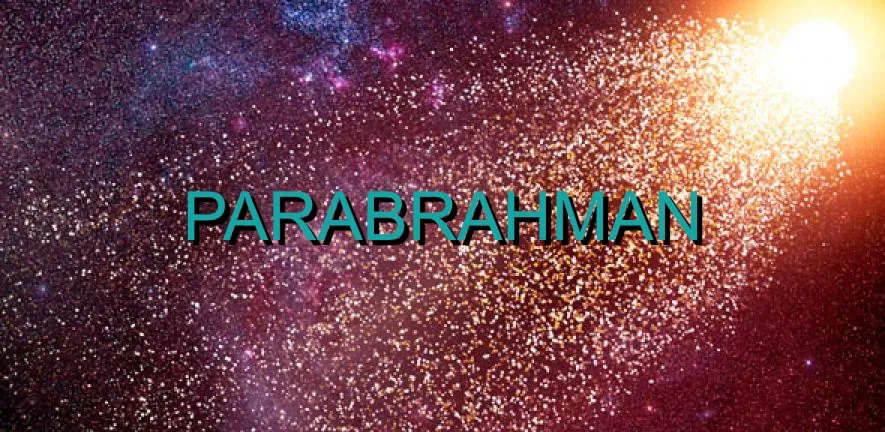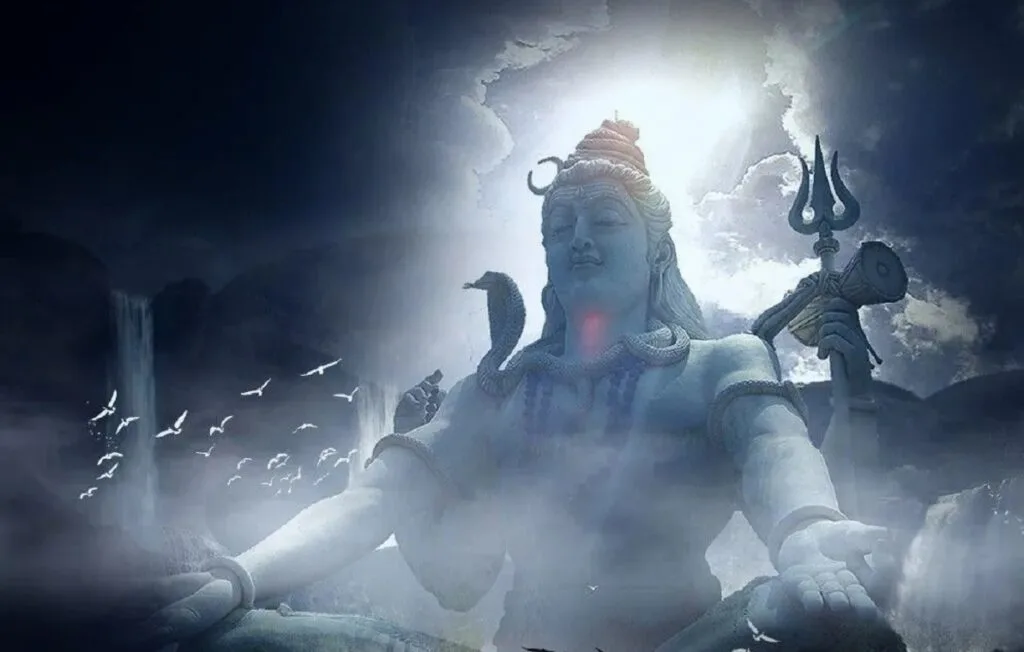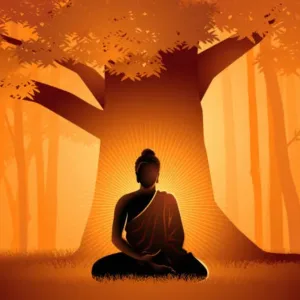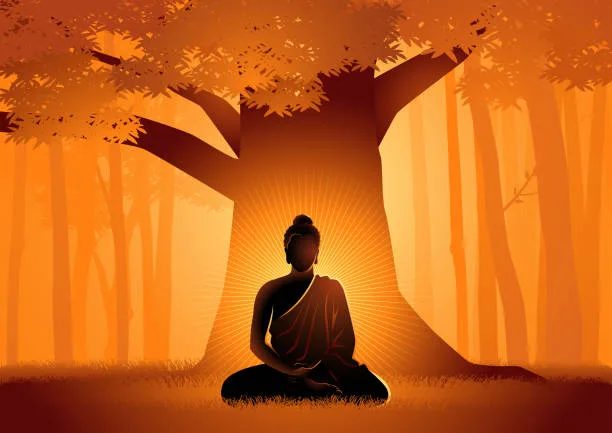In the realm of spiritual philosophies, particularly within the frameworks of Advaita Vedanta and other Hindu systems of thought, the term Parabrahman holds a central place. Parabrahman is not just a conceptual notion but is considered the highest, most transcendental reality that is beyond all forms of existence, thought, and duality. Understanding the idea of Parabrahman is a profound journey, one that impacts both the philosophical and experiential dimensions of human life.
In this blog, we will dive deep into the nature of Parabrahman, its philosophical roots, and how its realization can affect us at personal and collective levels. We will explore the cosmic nature of Parabrahman, its relationship with the individual self (Atman), its relevance in modern life, knowing the difference between Parabrahman and Brahman, and realizing the supreme reality of existence.

What Is Parabrahman? Defining the Supreme Reality
The Etymology of Parabrahman
The term “Parabrahman” is derived from Sanskrit, where “Para” means “beyond” or “supreme,” and “Brahman” refers to the universal consciousness or the ultimate reality. Thus, Parabrahman translates as the “Supreme Brahman” or “Supreme Consciousness,” transcending all material and finite dimensions.
In Hindu philosophy, Brahman is the universal spirit, omnipresent, eternal, and formless. However, Parabrahman goes even beyond Brahman, encapsulating the notion of that which is utterly beyond human comprehension, thought, and categorization. Parabrahman is regarded as Nirguna (without attributes) and Nirakara (formless), the source of all creation but beyond all created things.
Parabrahman in Advaita Vedanta
The Advaita Vedanta school of philosophy is one of the most prominent systems to discuss Parabrahman. It posits that Parabrahman is the ultimate non-dual reality. According to Advaita, the apparent multiplicity of the universe, including all beings and objects, is ultimately an illusion (Maya). Atman (the individual soul) and Brahman (the universal soul) are ultimately one and the same.
Key Characteristics of Parabrahman
- Eternal – Parabrahman is beyond time. It is unchanging and exists without beginning or end.
- Formless – It transcends all physical and metaphysical forms.
- Unknowable by the Mind – Parabrahman is beyond thought, language, and intellectual reasoning.
- Source of All – Although Parabrahman transcends creation, it is also the source from which the universe arises.
The Relationship Between Parabrahman and Atman
Atman: The Inner Soul
The Atman is often translated as “soul” or “self,” but in Vedantic philosophy, it refers to the true self that is beyond ego, body, and mind. The Atman is immortal, indestructible, and identical to Brahman in its purest form. While we might identify with our bodies, thoughts, emotions, and experiences, these are all temporary. The Atman, however, is the essence that underlies all experiences and remains unaffected by the fluctuations of life.
In the context of Advaita Vedanta, realizing the identity of the Atman with Brahman, or in this case, Parabrahman is the ultimate goal of spiritual practice. This realization is often referred to as Moksha or liberation from the cycle of birth, death, and rebirth (Samsara).
Tat Tvam Asi – “You Are That”
The phrase “Tat Tvam Asi,” found in the Chandogya Upanishad, is one of the Mahavakyas or great sayings of the Upanishads. It means “You are That,” pointing to the profound truth that the individual self (Atman) and the universal self (Brahman or Parabrahman) are essentially one and the same. This insight is central to the non-dual understanding of reality, where there is no separation between the individual and the supreme consciousness.
The Process of Realizing Parabrahman
- Self-Inquiry – The practice of self-inquiry (Atma Vichara) is a method for individuals to peel back the layers of false identification with body, mind, and ego. Through this process, one arrives at the realization of the true self or Atman, which is identical to Parabrahman.
- Meditation and Contemplation – Deep meditation on the nature of reality, often centered on questions like “Who am I?” or “What is the ultimate reality?” leads to the experience of oneness with Parabrahman.
- Detachment (Vairagya) – By cultivating detachment from worldly pleasures and dualities, individuals can attain a state of tranquility and perceive the underlying unity of all existence, thereby experiencing Parabrahman.

How Parabrahman Affects Us: Transformational Impact on Life
Knowing Parabrahman as a Liberation
At its core, the realization of Parabrahman has the potential to fundamentally transform the way we perceive and interact with the world. We suffer when we live in ignorance of our true nature and remain attached to dualities (like success and failure, joy and sorrow). Recognizing the non-dual nature of Parabrahman allows for the transcendence of these polarities, leading to inner peace, liberation, and freedom from suffering.
Freedom from the Cycle of Samsara
In Vedantic philosophy, Samsara refers to the cycle of birth, death, and rebirth. As long as one is caught in this cycle, one experiences the inevitable suffering that accompanies life. The realization of Parabrahman is equated with liberation from this cycle. Once the true nature of the self is understood to be eternal and beyond form, the soul is freed from the constant round of reincarnation.
The Experience of Oneness
The experience of oneness with Parabrahman has a profound psychological and emotional effect on individuals. It breaks down the illusion of separation between oneself and others, leading to compassion, empathy, and a deep sense of connection with all beings. This state of oneness fosters peace, cooperation, and selfless service because the boundaries of “me” and “you” dissolve in the face of the all-encompassing unity of Parabrahman.
The Difference Between Parabrahman and Brahman
While Parabrahman and Brahman are closely related terms in Hindu philosophy, particularly in the context of Advaita Vedanta, they represent different levels of understanding or experience of the ultimate reality. Both are concerned with the nature of the supreme consciousness or the ultimate ground of existence, but they highlight different aspects of this profound truth.
Brahman is often described as the universal spirit or cosmic principle that pervades all of existence. It is the cause, sustainer, and foundation of the universe. Brahman can be understood in two forms: Saguna Brahman and Nirguna Brahman. Saguna Brahman refers to Brahman with attributes, where it is associated with divine qualities like omniscience, omnipotence, and omnipresence, and can be perceived in the form of deities like Vishnu or Shiva. Nirguna Brahman, on the other hand, is Brahman without attributes, the formless, limitless, and transcendent reality.
Parabrahman goes beyond this duality. While Brahman can still be conceptualized or meditated upon (even in its Nirguna form), Parabrahman refers to the absolute, which is utterly beyond all distinctions, attributes, and forms, including the conceptualizations of Nirguna Brahman. It is the unconditioned and ineffable reality, beyond even the comprehension of the mind and intellect. Parabrahman is the source of both Nirguna and Saguna Brahman and cannot be defined, described, or categorized in any way.
Parabrahman and Modern Life: Is It Still Relevant?
The Relevance of Parabrahman in the Modern World
In an era dominated by materialism, consumerism, and individualism, the concept of Parabrahman offers a powerful antidote to the fragmentation of the modern psyche. Many people today feel alienated, and disconnected from nature, others, and even from themselves. The philosophy of Parabrahman invites us to reconnect with the deepest layers of existence, reminding us that beneath the apparent chaos of the world, there is an underlying order and unity.
Dealing with Stress and Anxiety
One of the most practical ways that an understanding of Parabrahman can affect us is in dealing with modern psychological challenges, like stress, anxiety, and depression. The realization that the self is not limited to the ego or the body can offer tremendous relief. Practices like meditation, which focus on connecting with this higher consciousness, help cultivate inner stillness, allowing us to step back from the noise of the world and rest in the awareness of our true nature.
Promoting Sustainability and Compassion
Understanding Parabrahman as the source of all life also fosters a greater sense of responsibility towards the environment and all living beings. If all is one, and everything is interconnected through the web of existence, harming the earth or other beings is, in essence, harming oneself. This realization can be a powerful motivator for sustainable practices, ethical living, and universal compassion.
How to Achieve the Parabrahman State
Achieving the state of Parabrahman is not a matter of acquisition but of realization. It is important to understand that Parabrahman is not something outside of us to be attained; rather, it is our true nature that is already present but obscured by ignorance, false identification, and attachment to the ego. The journey toward realizing Parabrahman involves self-inquiry, meditation, and a deep process of letting go of the false notions we hold about ourselves and the world.
- Self-Inquiry (Atma Vichara): One of the most direct paths to realizing Parabrahman is the practice of self-inquiry, which was emphasized by great sages like Ramana Maharshi. This involves asking the question, “Who am I?” and deeply contemplating this inquiry beyond intellectual understanding. Through this process, one discovers that the true self (Atman) is not the body, mind, or ego, but the infinite, unchanging consciousness that is one with Parabrahman. The essence of self-inquiry is to strip away all false identifications until only the formless, eternal awareness remains.
- Meditation (Dhyana): Meditation is another powerful tool for realizing the state of Parabrahman. By stilling the mind and detaching from sensory inputs, one begins to experience the pure, undisturbed awareness that is always present beneath the fluctuations of thought and emotion. Over time, deep meditation can lead to the dissolution of the sense of separation between the individual self and the universal self. In this state of oneness, the individual experiences Nirvikalpa Samadhi—a transcendental state of pure consciousness where the sense of duality completely vanishes, revealing the non-dual reality of Parabrahman.
- Detachment (Vairagya): To reach the state of Parabrahman, one must also cultivate detachment or Vairagya. This means letting go of attachments to material possessions, desires, and even the ego. By realizing the impermanence of the external world and not identifying with fleeting experiences, one moves closer to the unchanging reality of Parabrahman. Detachment does not mean abandoning life, but rather living in the world without being bound by it—remaining centered in the awareness of the eternal self.
- Living with Awareness (Jnana Yoga): The path of knowledge (Jnana Yoga) is also a vital approach to achieving the Parabrahman state. It involves the study of scriptures like the Upanishads and the Bhagavad Gita, along with contemplation on the nature of reality. By understanding that the phenomenal world is an illusion (Maya) and that Parabrahman is the only eternal truth, one begins to break free from ignorance. The intellectual knowledge gained through Jnana Yoga must eventually transform into experiential wisdom, leading to the realization of the self’s identity with Parabrahman.
Ultimately, achieving the state of Parabrahman is not a process of “becoming” but of awakening to what has always been true. Through sustained spiritual practice, detachment, and inner inquiry, one can transcend the illusion of duality and recognize the oneness of all existence with Parabrahman—the infinite, formless reality beyond thought and description.

Conclusion: The Journey to Parabrahman
Parabrahman as the Ultimate Goal of Life
The concept of Parabrahman is not just a lofty philosophical idea but a practical guide for living a life of freedom, joy, and compassion. Understanding and experiencing Parabrahman changes our perspective on everything—from how we view ourselves to how we relate to others and the world around us. It offers a way out of the suffering of Samsara, allowing us to experience the eternal peace that comes from recognizing our true, formless nature.
Awakening to Parabrahman in Daily Life
Though Parabrahman may seem abstract or distant, its truth can be realized here and now. Through consistent spiritual practice, self-inquiry, and meditation, anyone can begin the process of awakening to this supreme reality. The effects of such awakening permeate all aspects of life, making every action, thought, and experience more meaningful and aligned with the ultimate truth of existence.
In the end, the journey toward realizing Parabrahman is a personal one, yet it is also universal—pointing to the deepest truths of human existence and the ultimate reality that binds us all together.
Disclaimer: The author’s views are his or her own. The facts and opinions in the article have been taken from various articles and commentaries available in the online media and Eastside Writers does not take any responsibility or obligation for them.
Note: Contact our Writers at www.eastsidewriters.com for writing Blogs/Articles on any niche. We have experts in various domains from Technology to Finance and from Spirituality to Lifestyle and Entertainment.






